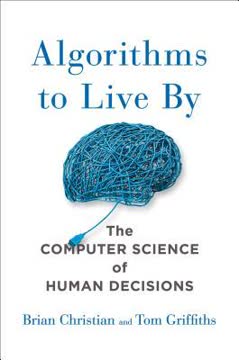Key Takeaways
1. Requirements engineering is crucial for software project success
Errors made during the requirements stage account for 40 to 60 percent of all defects found in a software project.
Foundation for success. Requirements engineering forms the bedrock of any successful software project. It involves eliciting, analyzing, specifying, and validating the needs and constraints of various stakeholders for a software system. By investing time and effort in this crucial phase, teams can:
- Reduce costly rework later in the development process
- Ensure alignment between customer expectations and project outcomes
- Provide a clear direction for design, implementation, and testing activities
Avoiding common pitfalls. Many projects fail due to inadequate requirements engineering. Some common issues include:
- Insufficient user involvement
- Poorly defined project scope
- Ambiguous or incomplete requirements
- Lack of requirements prioritization
- Ineffective requirements management
2. Effective communication is key in gathering and managing requirements
Success in software requirements, and hence in software development, depends on getting the voice of the customer close to the ear of the developer.
Bridge the gap. Requirements analysts serve as a vital communication bridge between customers and developers. They must:
- Speak the customer's language while understanding technical constraints
- Translate business needs into clear, actionable requirements
- Facilitate discussions to resolve conflicts and clarify ambiguities
Techniques for effective communication:
- Active listening and asking probing questions
- Using visual models and prototypes to illustrate concepts
- Conducting structured workshops and interviews
- Documenting requirements in a clear, consistent format
- Regular reviews and feedback sessions with stakeholders
3. User involvement is essential throughout the requirements process
There's no substitute for having the development team work directly with actual users throughout the project.
Continuous collaboration. Engaging users throughout the project lifecycle ensures that the final product meets their needs and expectations. This involves:
- Identifying key user classes and their representatives
- Appointing product champions to advocate for user needs
- Conducting regular user feedback sessions and reviews
- Involving users in requirements prioritization and validation activities
Benefits of user involvement:
- More accurate and complete requirements
- Higher user satisfaction with the final product
- Reduced risk of scope creep and feature bloat
- Better alignment between user needs and project objectives
- Early identification of usability issues and design flaws
4. Use cases and prototypes bring requirements to life
Use cases shift the perspective of requirements development to discussing what users need to accomplish, in contrast to the traditional elicitation approach of asking users what they want the system to do.
Visualize user interactions. Use cases and prototypes provide tangible representations of how users will interact with the system, making requirements more concrete and easier to understand.
Use cases:
- Describe specific user goals and system interactions
- Help identify missing or unnecessary functionality
- Provide a basis for test case development
- Facilitate communication between stakeholders
Prototypes:
- Allow users to experience potential system behaviors
- Help refine user interface design and workflow
- Uncover hidden requirements and usability issues
- Reduce the risk of misunderstandings between users and developers
5. Quality attributes are as important as functional requirements
Certain quality attributes distinguish a product that merely does what it's supposed to from one that delights its customers.
Beyond functionality. While functional requirements define what the system should do, quality attributes specify how well it should perform. Key quality attributes include:
- Performance: Response times, throughput, resource utilization
- Usability: Ease of learning, efficiency of use, user satisfaction
- Reliability: Frequency of failures, recovery time
- Security: Data protection, access control, privacy
- Maintainability: Ease of modification, extensibility
- Scalability: Ability to handle growth in users or data
Balancing trade-offs. Different quality attributes often conflict with each other, requiring careful consideration and prioritization. For example, improving security may impact performance, or enhancing usability might reduce efficiency for expert users.
6. Requirements prioritization helps manage scope and expectations
Prioritization is a way to deal with competing demands for limited resources.
Focus on value. Prioritizing requirements allows teams to:
- Deliver the most critical functionality early
- Manage scope creep and project constraints
- Make informed decisions about trade-offs
- Align development efforts with business objectives
Prioritization techniques:
- MoSCoW method: Must have, Should have, Could have, Won't have
- Numerical ranking or scoring systems
- Cost-value analysis
- Risk-based prioritization
- User voting or stakeholder consensus
7. Validation techniques ensure requirements are correct and complete
It costs far more to correct a defect that's found late in the project than to fix it shortly after its creation.
Early error detection. Requirements validation helps identify and correct issues before they propagate into design and implementation. Key validation techniques include:
- Formal inspections and peer reviews
- Traceability analysis
- Prototyping and user feedback
- Test case development
- Acceptance criteria definition
Benefits of validation:
- Reduced development costs and time
- Improved product quality and customer satisfaction
- Fewer defects and change requests during later stages
- Better alignment between requirements and stakeholder needs
- Increased confidence in project success
8. Requirements management is an ongoing process throughout development
Requirements management entails "establishing and maintaining an agreement with the customer on the requirements for the software project".
Continuous adaptation. Requirements management involves:
- Establishing a requirements baseline
- Controlling changes to requirements
- Maintaining traceability between requirements and other project artifacts
- Tracking requirements status and implementation progress
- Communicating changes to all stakeholders
Tools and techniques:
- Requirements management software
- Version control systems
- Change control boards and processes
- Impact analysis for proposed changes
- Regular requirements reviews and updates
9. Different project types require tailored requirements approaches
Every software project with resource limitations needs to define the relative priorities of the requested product capabilities.
Adapt to context. Requirements engineering practices must be tailored to the specific needs of different project types:
Maintenance projects:
- Focus on reverse-engineering existing systems
- Capture and document implicit knowledge
- Analyze impact of changes on existing functionality
COTS (Commercial Off-The-Shelf) implementations:
- Emphasize gap analysis between product capabilities and user needs
- Define customization and integration requirements
- Evaluate vendor claims against actual product functionality
Agile projects:
- Use lightweight documentation and iterative refinement
- Emphasize frequent user feedback and adaptation
- Focus on delivering working software incrementally
Large, complex systems:
- Employ formal modeling and specification techniques
- Emphasize thorough requirements validation and verification
- Manage dependencies between subsystems and components
Last updated:
FAQ
What’s Software Requirements: Practical Techniques for Gathering and Managing Requirements Throughout the Product Development Cycle by Karl Wiegers about?
- Comprehensive requirements guide: The book provides practical techniques for gathering, analyzing, specifying, validating, and managing software requirements throughout the product development cycle.
- Emphasis on communication: It highlights the importance of clear communication and collaboration between stakeholders, customers, and developers to ensure project success.
- Real-world focus: The book addresses common challenges in requirements engineering, such as incomplete requirements, scope creep, and changing needs, offering tools and examples to overcome them.
- Process integration: It connects requirements activities with other project processes like planning, design, testing, and change control, showing their influence on overall software quality.
Why should I read Software Requirements by Karl Wiegers?
- Reduce costly mistakes: The book demonstrates how poor requirements lead to rework, schedule overruns, and dissatisfied customers, and offers strategies to avoid these pitfalls.
- Improve project outcomes: By applying the book’s techniques, readers can increase customer satisfaction, control scope, and deliver projects on time and within budget.
- Practical, proven methods: Wiegers focuses on mainstream, accessible practices rather than exotic methodologies, making the advice relevant for a wide range of projects and roles.
- Skill and tool development: Readers gain actionable skills in requirements documentation, traceability, and risk management, as well as guidance on selecting and using requirements management tools.
What are the key takeaways from Software Requirements by Karl Wiegers?
- Requirements quality is critical: Clear, complete, and verifiable requirements are essential for project success and minimizing rework.
- Collaboration is vital: Effective communication and partnership between customers, analysts, and developers are necessary to elicit and manage requirements.
- Process and tools matter: The book advocates for defined processes, use of templates, and appropriate tools to support requirements engineering and management.
- Continuous improvement: Requirements practices should evolve through assessment, piloting, and evaluation, with a focus on addressing root causes of common problems.
What are the main components of requirements engineering in Software Requirements by Karl Wiegers?
- Requirements development: This includes elicitation, analysis, specification, and validation of both functional and nonfunctional requirements.
- Requirements management: Activities such as tracking status, managing changes, maintaining traceability, and baselining requirements are emphasized.
- Process assets: The book provides templates, checklists, and procedures to support consistent and effective requirements practices.
- Continuous improvement: A cyclical process of assessment, planning, piloting, and evaluation is recommended to enhance requirements engineering over time.
How does Karl Wiegers define a “requirement” in Software Requirements?
- User and system focus: A requirement is a condition or capability needed by a user to solve a problem or achieve an objective, or that must be met by a system to satisfy a contract or standard.
- Documented and testable: Requirements must be documented clearly and be verifiable; informal or verbal agreements are insufficient.
- Stakeholder value: A requirement is a property a product must have to provide value to a stakeholder, encompassing both user and developer perspectives.
What are the different types and levels of requirements in Software Requirements by Karl Wiegers?
- Three levels of requirements: Business requirements (high-level objectives), user requirements (user goals and tasks), and functional requirements (specific software behaviors).
- Nonfunctional requirements: These include quality attributes such as usability, performance, reliability, and constraints that affect design and implementation.
- Business rules: Corporate policies, regulations, and standards that influence requirements but are not themselves software requirements; they often drive specific functional requirements.
What are the most common problems in requirements engineering according to Software Requirements by Karl Wiegers?
- Insufficient user involvement: Lack of direct user input leads to late-breaking requirements and dissatisfaction.
- Scope creep and ambiguous requirements: Uncontrolled growth of requirements and vague specifications cause delays, rework, and misunderstandings.
- Gold plating and minimal specs: Adding unrequested features wastes resources, while minimal specifications frustrate both developers and customers.
- Overlooked user classes and poor planning: Missing user needs and unrealistic estimates jeopardize project success.
What is the role of the requirements analyst in Software Requirements by Karl Wiegers?
- Central communication bridge: The analyst gathers, analyzes, documents, and validates requirements, serving as the conduit between customers and developers.
- Key responsibilities: Tasks include defining business requirements, identifying stakeholders, eliciting and analyzing requirements, writing specifications, modeling, validating, and managing changes.
- Essential skills: Strong listening, interviewing, analytical, facilitation, observational, writing, organizational, and interpersonal skills, as well as domain knowledge, are crucial.
How does Software Requirements by Karl Wiegers recommend documenting and modeling requirements?
- Software Requirements Specification (SRS): The SRS should precisely state functional and nonfunctional requirements, constraints, and interfaces, using clear language and consistent templates.
- Modeling techniques: The book advocates using data flow diagrams, entity-relationship diagrams, state-transition diagrams, use cases, and decision tables to clarify and validate requirements.
- Traceability and modifiability: Each requirement should have a unique identifier for traceability, and documentation should be structured for easy updates and impact analysis.
How does Software Requirements by Karl Wiegers address nonfunctional requirements and quality attributes?
- Importance of nonfunctional requirements: Quality attributes like usability, performance, reliability, and maintainability are critical to software success and must be specified quantitatively.
- Planguage for precision: The book introduces Tom Gilb’s Planguage to make quality goals measurable, verifiable, and prioritized.
- Influence on design: Nonfunctional requirements drive architectural decisions and often involve trade-offs, so their priorities must be established early.
What are the best practices for managing requirements changes and traceability in Software Requirements by Karl Wiegers?
- Change control process: All proposed changes should be formally submitted, evaluated for impact, and approved or rejected by a change control board.
- Impact analysis and traceability: Analyze the effects of changes on requirements, design, code, tests, schedule, and cost, and maintain traceability links between requirements and related artifacts.
- Version control and tools: Use requirements management tools to track versions, changes, and relationships, ensuring the requirements baseline accurately reflects the product.
How does Software Requirements by Karl Wiegers recommend improving requirements engineering processes and addressing root causes of problems?
- Continuous, evolutionary improvement: Process improvement should be cyclical, involving assessment, planning, piloting, implementation, and evaluation.
- Address root causes: Analyze symptoms like incomplete or ambiguous requirements to identify and address underlying issues such as lack of user involvement or poor processes.
- Use process assets: Adopt standard templates, checklists, and procedures, and focus on a few high-impact improvements at a time.
- Cultural and organizational change: Success depends on management commitment, clear goals, and addressing people and cultural factors alongside technical fixes.
Review Summary
Software Requirements by Karl Wiegers is highly regarded as an essential guide for business analysts and software engineers. Readers praise its comprehensive coverage of requirements engineering, from elicitation to management. Many consider it a must-read for beginners and experienced professionals alike. The book is commended for its practical approach, clear explanations, and useful templates. Some reviewers note its length and academic style as potential drawbacks. Overall, it's viewed as a valuable resource for understanding and implementing effective requirements processes in software development projects.
Similar Books










Download PDF
Download EPUB
.epub digital book format is ideal for reading ebooks on phones, tablets, and e-readers.




